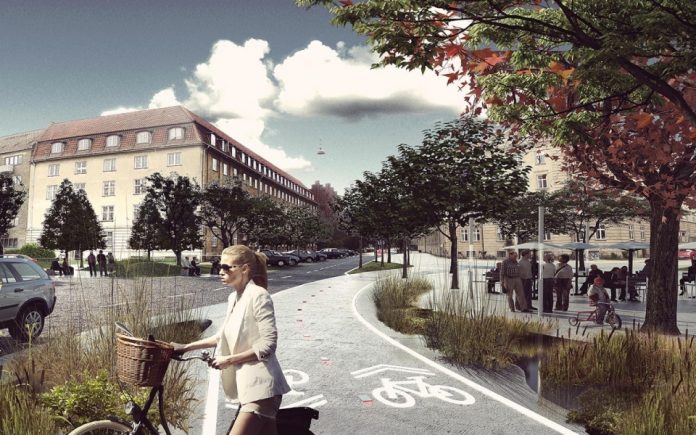At the International Water Association’s ‘Embrace the Water’ conference in Gothenburg, Sweden, Helle Søholt, CEO of Gehl, highlighted how water can benefit public life in cities and the importance of urban design being people centric.
“We must find ways to merge managing the risk of water and embracing it as an asset, making sure that what we are left with are solutions that increase people’s quality of life in cities,” said Søholt. “People are attracted to water. We have positive associations with the sound and blue colour of water, all linked to our needs as humans. So naturally we see waterfront destinations come up all over the world and people congregating at these placed to enjoy the sound and activities surrounding water.”
Gehl are focused on building cities for people and making sure all their work benefits those that live, work and move around cities today. Integrated design solutions have been identified as one of the biggest challenges facing city authorities in getting people across different silos to work together.
One of Søholt’s key points was that there is a common denominator with all of the risks we are facing; people and their behavioural change, which need to be addressed in all the solutions that are being formulated.
When the city of Gothenburg were formulating its strategy a team was gathered across all the various departments to sit together in the same space in the harbour to come up with new solutions.
“It is unfortunately very seldom that I see this kind of totally integrated solution making and creative design leadership in cities around the world,” explained Søholt. “So we have to overcome this way of silo planning and move away from reactive governance where we think of planning as a linear process and move towards a much more proactive facilitative leadership model where the cities are actually engaging all the stakeholders to come up with not just good projects but with shared value. Something that we can see we are all benefitting from.”
The city of Copenhagen was highlighted as a leading example after the designing of a climate neighbourhood in the northern part of the city, where they have engaged local citizens through a local office where people can be involved in the design of plazas and streets.
Authorities have also recently created a green city strategy for the whole of Copenhagen. One of the elements in this strategy is planting 1,000 new trees in the city, where the citizens were asked to vote for the streets in most need of greening and climate adaptation design.








